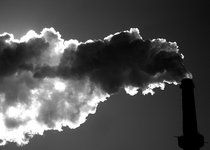Global 2009 emissions lower than previous year
New report announces global emissions level in 2009 lower than previous year for the first time this decade.

 German renewable energy institute IWR has announced that the level of global carbon dioxide emissions has decreased in relation to the previous year for the first time this decade.
German renewable energy institute IWR has announced that the level of global carbon dioxide emissions has decreased in relation to the previous year for the first time this decade.
This drop follows a decade of rapid growth with CO2 emissions rising by an average of 2.5 percent per year which is nearly four times as fast as in the 1990s.
Global CO2 levels fell 1.3 percent to 31.3 billion tones in 2009 and the Muenster based institute has cited reasons including the global economic crisis and rising investments in renewable energy sources.
IWR director Norbert Allnoch has said given the length and breath of the crisis, the reductions in carbon emissions might have been even greater had stronger output in Asian and Middle Eastern countries not over-compensated the savings obtained from declines in Europe, Russia, Japan and the US.
"The energy-induced CO2 output in China in 2009 due to its economic growth has grown to a level now that is as high as that of the U.S. and Russia combined," he said.
According to IWR China is now the world's largest emitter with a 9 percent increase from 6.81 billion tonnes in 2008 to 7.43 billion in 2009. In contrast the US has reduced its emissions from 6.37 billions tonnes in 2008 to 5.95 billion.
However, a recent study by researchers at Stanford University found that 22 percent of Chinese emissions came from the production of goods for export whereas the manufacture of goods imported by the US accounted for 190 million tonnes of CO2 emissions per year.
If totals were adjusted to account for import and export, the US would remain the world's largest emitter, the study states.
Deforestation accounts for a large amount of CO2 emissions alongside the burning of fossil fuels. In 2008, global emissions from land use change were estimated at 1.2 billion tonnes of carbon – Brazil and Indonesia alone accounted for 60 percent of these land use change emissions.
In terms of emissions per person, developing nations remain far below most of those in the industrial world. Independent studies show Australia, Canada and the US emitting 4-5 tonnes per head in 2009.
Per capita emissions in these countries are three times those in China and almost four times the world average. Studies show that while life in many European countries is comparable to that in the US, only half as much CO2 emissions are produced.
The IWR also stated that global investment in renewable installations for power, heat and fuels last year rose from 120 billion Euros in 2008 to 125 billion. It announced that the economic crisis had led to price cuts as well as lower equipment costs which increased the focus on investment in solar and wind power.
Installed wind capacity alone grew by over 30 percent globally and in the US, where emissions from coal fell 13 percent from 2007 to 2009, over 200 new wind farms came online offering more than 18,000 megawatts of capacity.
IWR concluded by suggesting that spending on renewables be quadrupled to 500 billion Euros in order to effectively stabilize global CO2 and decrease the amount of fossil fuels usage. Global CO2 emissions are still 37 percent above those in 1990, the basis year for the Kyoto Climate Protocol.
Author: Tom Watts | Climate Action
Images: Senor Codo | Flickr
